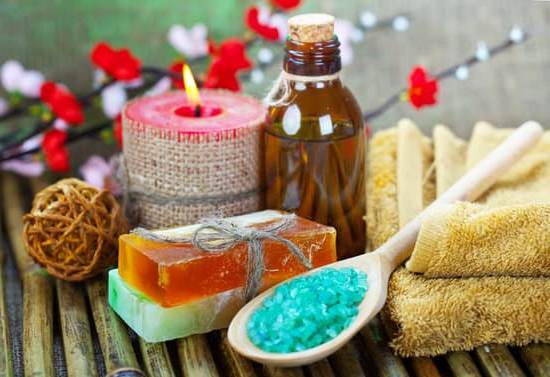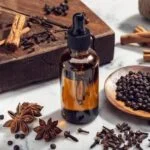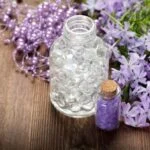
Aromatherapy massage is a popular holistic treatment that combines the benefits of massage therapy with the use of essential oils. This therapeutic practice has been used for centuries to promote relaxation, relieve stress, and enhance overall well-being. In this article, we will explore the history and origins of aromatherapy massage, understand how essential oils enhance the experience, delve into the science behind its stress-relieving effects, and provide tips on preparing for a blissful massage session.
Aromatherapy massage traces its roots back to ancient civilizations such as Egypt, China, and India. These cultures recognized the healing properties of plants and herbs and incorporated them into their wellness practices. Aromatherapy massage combines gentle movements of the masseuse’s hands and the application of carefully selected essential oils to promote not only physical relaxation but also emotional balance.
The use of essential oils plays a crucial role in aromatherapy massage. These concentrated plant extracts are known for their therapeutic properties, which can include soothing sore muscles, calming anxiety, or invigorating the senses. Each essential oil has its unique aroma and medicinal benefits, making it important to choose oils that suit your needs and preferences. Understanding how these oils interact with our bodies can help maximize the benefits of aromatherapy massage.
In our modern fast-paced world filled with constant stressors, aromatherapy massage offers a sanctuary where one can unwind and find solace. Scientific research has shown that this type of massage can lower cortisol levels (the stress hormone) while increasing serotonin and dopamine levels (hormones associated with happiness). By providing physical relaxation alongside psychological benefits, aromatherapy massage offers a holistic approach to well-being.
Whether you are new to aromatherapy or a seasoned enthusiast looking to learn more about this ancient practice, this article will guide you through every aspect of aromatherapy massage. From understanding different techniques to exploring popular essential oils and their health benefits, we will equip you with the knowledge and tools to incorporate this rejuvenating practice into your self-care routine.
So, sit back, relax, and embark on a journey to rediscover the power of aromatherapy massage for your mind, body, and spirit.
The History and Origins of Aromatherapy Massage
Aromatherapy massage has a long and rich history that dates back to ancient times. The practice of using essential oils for healing and relaxation can be traced to ancient civilizations such as Egypt, China, and India. In this section, we will explore the origins of aromatherapy massage and the techniques and traditions that have been passed down through generations.
Ancient Egyptian culture embraced the use of aromatic oils for both medicinal and cosmetic purposes. Hieroglyphics found on temple walls depict herbal preparations being used in religious ceremonies, beauty rituals, and healthcare practices. The Egyptians believed that certain scents had the power to communicate with gods and influence positive changes in physical and emotional well-being.
Similarly, traditional Chinese medicine incorporated aromatherapy massage into its healing practices thousands of years ago. Herbal remedies were combined with massage techniques to stimulate the flow of Qi (energy) in the body, promoting balance and harmony. Specific meridian points on the body were targeted with essential oils to address specific ailments or imbalances.
In India, aromatherapy massage has its roots in Ayurveda, a holistic system of medicine that focuses on achieving balance between mind, body, and soul. Ayurvedic practitioners believed that essential oils had unique therapeutic properties that could be utilized in massage treatments. These massages not only alleviated physical ailments but also promoted emotional stability and mental clarity.
The ancient techniques and traditions of aromatherapy massage have laid the foundation for its modern practice. Today, aromatherapy massage combines these age-old wisdoms with scientific knowledge to provide a truly holistic approach to health and wellness.
| Ancient Culture | Key Beliefs | Practices |
|---|---|---|
| Egyptian | The use of aromatic oils for religious ceremonies, beauty rituals, and healthcare. | Herbal preparations, perfumes, and massage techniques. |
| Chinese | Aromatherapy massage as a tool to stimulate the flow of energy and promote balance. | Combination of herbal remedies and massage techniques targeting specific meridian points. |
| Indian | Ayurvedic approach to health and wellness, using essential oils for both physical and emotional well-being. | Ayurvedic massages incorporating essential oils to achieve balance in mind, body, and soul. |
Understanding Essential Oils
When it comes to aromatherapy massage, essential oils play a crucial role in creating a blissful and therapeutic experience. These oils are known for their powerful aromas and healing properties, which enhance the overall benefits of the massage. In this section, we will explore how essential oils are used during an aromatherapy massage and how they contribute to promoting relaxation and well-being.
- Choosing the Right Essential Oils: The first step in enhancing your aromatherapy massage experience is selecting the right essential oils. There is a wide variety of oils available, each with its own unique aroma and therapeutic qualities. Some popular options include lavender, eucalyptus, peppermint, chamomile, and citrus scents.
Lavender oil is widely used for its soothing properties that help calm the mind and promote sleep. Eucalyptus oil is known for its refreshing scent that can clear congestion and relieve muscle tension. Citrus scents like orange or lemon can uplift your mood and provide an energizing effect. - Blending Essential Oils: A skilled aromatherapist can create personalized blends of essential oils to cater to your specific needs and preferences. These blends may combine different oils to create a synergistic effect that enhances their individual benefits. For example, a blend of lavender, chamomile, and frankincense may be used to promote relaxation and reduce anxiety levels. It’s important to communicate with your therapist about any allergies or sensitivities you may have to certain oils.
- Application Methods: During an aromatherapy massage, essential oils are typically applied to the skin through dilution in carrier oils such as sweet almond or jojoba oil. This allows the aroma and therapeutic compounds of the essential oils to be absorbed by the body through inhalation as well as skin absorption. The therapist will use gentle strokes and techniques to distribute the oils evenly and ensure maximum benefit.
The Science Behind Aromatherapy Massage
Aromatherapy massage is not just a luxurious spa treatment; it also has scientific benefits that contribute to stress relief and relaxation. The combination of touch and scent in aromatherapy massage engages both the body and mind, making it an effective method for promoting overall well-being.
One of the key ways aromatherapy massage relieves stress is through the inhalation of essential oils. When essential oils are inhaled, they stimulate the olfactory system, which is linked directly to the brain’s limbic system. This part of the brain controls emotions and influences the nervous system. As a result, inhaling essential oils can trigger emotional responses such as relaxation and euphoria.
In addition to inhalation, aromatherapy massage also involves direct absorption of essential oils into the skin through gentle rubbing and massaging techniques. Essential oils have molecular structures that allow them to penetrate into the skin and enter the bloodstream. Once in the bloodstream, they can have physiological effects on various systems in the body.
To understand how aromatherapy massage promotes relaxation, it’s important to know that essential oils contain compounds called terpenes that have anxiolytic properties. These terpenes interact with receptors in our brain that regulate emotions and mood. For example, lavender essential oil contains linalool, a terpene known for its anxiety-reducing effects.
Overall, by combining touch and scent, aromatherapy massage provides a sensory experience that has been scientifically proven to reduce stress levels and induce relaxation. Whether it’s through inhalation or absorption into the skin, essential oils play a key role in this process by interacting with our brain’s chemistry. So if you’re looking for a natural way to unwind and improve your well-being, consider incorporating aromatherapy massage into your self-care routine.
Preparing for an Aromatherapy Massage
When preparing for an aromatherapy massage, it is important to choose the right essential oils and create a relaxing atmosphere in the massage space. The choice of essential oils can greatly enhance the overall experience and therapeutic benefits of the massage. Here are some tips on choosing the right essential oils for your aromatherapy massage:
- Consider your desired outcome: Different essential oils have different properties and effects. For example, lavender oil is known for its calming and soothing properties, making it ideal for relaxation and stress relief. On the other hand, eucalyptus oil has invigorating qualities and can help with respiratory issues. Citrus scents like orange or lemon can uplift mood and promote a positive mindset. Think about what you want to achieve with your aromatherapy massage and select oils accordingly.
- Familiarize yourself with popular scents: Lavender, eucalyptus, and citrus scents are commonly used in aromatherapy massages due to their well-known benefits. Lavender provides relaxation, eucalyptus clears congestion, while citrus scents offer a refreshing sensation. These oils are easy to find and widely available in most stores that sell essential oils.
- Choose high-quality oils: Ensure that you’re using pure essential oils for your aromatherapy massage. Look for reputable brands or consult with an aromatherapist who can guide you in selecting authentic, high-quality products. Avoid synthetic fragrances or diluted oils as they may not provide the same therapeutic benefits.
Once you have chosen your essential oils, it’s time to prepare the massage space for a truly immersive experience:
- Create a calm environment: Clear any clutter from the massage room or area to create a peaceful ambiance. Use soft lighting or candles to set a relaxing mood. Play soothing music or nature sounds in the background to further enhance the experience.
- Enhance the atmosphere: Consider using a diffuser or oil burner to disperse the scent of essential oils throughout the space. This will create a constant aromatic environment that complements the massage.
- Prepare clean and comfortable linens: Make sure that you have freshly laundered towels and sheets for your massage session. Soft, clean linens will not only provide comfort but also contribute to a hygienic experience.
By carefully selecting the right essential oils and creating an inviting massage space, you can ensure a truly immersive and therapeutic aromatherapy massage experience for both body and mind.
| Tips on Choosing Essential Oils | Tips on Preparing the Massage Space |
|---|---|
| 1. Consider desired outcome | 1. Create a calm environment |
| 2. Familiarize with popular scents | 2. Enhance the atmosphere |
| 3. Choose high-quality oils | 3. Prepare clean and comfortable linens |
The Aromatherapy Massage Process
Aromatherapy massage is a holistic healing practice that combines the benefits of touch therapy with the use of essential oils. It promotes relaxation, relieves stress, and enhances overall well-being. If you’re curious about experiencing an aromatherapy massage or want to learn more about the process, this step-by-step guide will take you through each stage of a blissful aromatherapy massage.
Consultation and Selection of Essential Oils
Before your aromatherapy massage session begins, you will have a consultation with the therapist to discuss any specific concerns, preferences, or medical conditions. This is crucial as it helps tailor the treatment to meet your individual needs. Based on your consultation, the therapist will select essential oils that align with your goals. For example, if you’re seeking relaxation and stress relief, lavender or chamomile essential oil may be chosen.
Setting up the Massage Space
Creating a serene and soothing environment is important for an effective aromatherapy massage experience. The therapist will ensure that the room temperature is comfortable and adjust lighting to create a calming ambiance. Soft music may be played in the background to further enhance relaxation. The massage table will be prepared with clean linens and a bolster or pillow for additional comfort.
Application of Essential Oils
Once in the massage room, you’ll be asked to undress (keeping underwear on) and lie down on the table under a sheet or towel. The therapist will then apply diluted essential oils directly onto your skin using gentle strokes and techniques appropriate for aromatherapy massage. The essential oils may also be diffused in the room to further enhance their therapeutic effects.
Massage Techniques
During an aromatherapy massage, various massage techniques are used depending on your needs and preferences. These can include Swedish techniques for general relaxation, deep tissue massage to target specific areas of tension, or lymphatic drainage techniques to promote detoxification and stimulate the body’s natural healing processes. The therapist will adjust the pressure and intensity of the massage based on your feedback.
Post-Massage Relaxation
After the aromatherapy massage is complete, the therapist will give you a few moments to relax while they step out of the room. Take this time to soak in the therapeutic benefits of the treatment and allow your mind and body to fully unwind. Once you’re ready, you can slowly get up from the table and get dressed.
The process of an aromatherapy massage is designed to provide a blissful experience that nurtures both body and soul. With its combination of touch therapy and essential oils, it offers a unique way to relax, relieve stress, and promote overall well-being. By following this step-by-step guide, you can ensure that you make the most out of your aromatherapy massage session.
Popular Essential Oils for Aromatherapy Massage
Aromatherapy massage utilizes a variety of essential oils to enhance the overall experience and provide specific benefits. In this section, we will explore some popular essential oils used in aromatherapy massage and highlight the unique benefits they offer.
- Lavender: Lavender is one of the most widely used essential oils in aromatherapy massage. Its calming and soothing properties make it perfect for promoting relaxation and reducing anxiety. Lavender oil can also help improve sleep quality, making it an excellent choice for individuals dealing with insomnia or restlessness. Additionally, lavender has been found to have pain-relieving properties, making it beneficial for those suffering from muscle tension or headaches.
- Eucalyptus: Known for its refreshing and invigorating scent, eucalyptus oil is commonly used in aromatherapy massages to relieve congestion and clear the respiratory system. This makes it particularly useful for individuals with allergies, sinusitis, or cold symptoms. Eucalyptus oil also possesses anti-inflammatory properties that can help soothe sore muscles and joints.
- Citrus Scents: Essential oils derived from citrus fruits such as oranges, lemons, and grapefruits are popular choices in aromatherapy massages due to their uplifting and energizing effects. Citrus scents are known to boost mood, increase mental focus, and reduce stress levels. These oils can also have a cleansing effect on both the body and mind.
When choosing essential oils for your aromatherapy massage, consider your individual needs and preferences as well as any specific health concerns you may have. It’s important to note that some essential oils are not suitable for everyone, especially those with certain medical conditions or sensitivities. It’s always a good idea to consult with a qualified aromatherapist or healthcare professional before using any new essential oils.
Potential Health Benefits of Aromatherapy Massage
Aromatherapy massage is not only a relaxing and rejuvenating experience, but it also offers potential health benefits for pain relief, improved sleep quality, and overall well-being. The use of essential oils during the massage session can have therapeutic effects on both the mind and body.
One of the primary health benefits of aromatherapy massage is its ability to provide pain relief. Certain essential oils, such as lavender and peppermint, have analgesic properties that can help alleviate muscle aches, joint pains, and headaches. When these oils are combined with the soothing touch of the massage therapist’s hands, a synergy is created that helps reduce inflammation and promotes natural pain relief.
In addition to pain relief, aromatherapy massage has been found to improve sleep quality. Many people suffer from sleep disorders or struggle with falling asleep due to stress or anxiety. The use of essential oils like chamomile or jasmine during a massage session can help create a calming atmosphere and promote relaxation. These scents have sedative effects that can help quiet the mind and prepare the body for restful sleep.
Furthermore, aromatherapy massage has overarching benefits for an individual’s overall well-being. It helps reduce stress levels by activating the body’s relaxation response and relieving muscle tension. This can have positive effects on mental health by promoting a sense of calmness and improving mood. Aromatherapy massage also enhances blood circulation and lymphatic drainage, which aids in detoxification and boosts immune function.
| Health Benefit | Evidence |
|---|---|
| Pain Relief | A study published in the Journal of Clinical Medicine found that aromatherapy massage using essential oils like lavender and eucalyptus significantly reduced pain intensity in individuals with chronic low back pain. |
| Sleep Quality | In a study published in the Journal of Alternative and Complementary Medicine, participants who received aromatherapy massage with lavender oil experienced improved sleep quality compared to those who received a placebo massage. |
| Overall Well-being | A systematic review published in Evidence-Based Complementary and Alternative Medicine concluded that aromatherapy massage has positive effects on psychological well-being, including reduced anxiety and improved mood. |
The Different Techniques of Aromatherapy Massage
Aromatherapy massage offers a wide range of techniques to cater to different preferences and needs. Whether you are seeking deep relaxation or relief from specific ailments, there is an aromatherapy massage style that can address your unique requirements. Here are some popular techniques to consider:
Swedish Massage
Swedish massage is one of the most common techniques used in aromatherapy massage. It involves long and flowing movements, as well as gentle kneading and tapping motions. This technique helps relax the muscles, improve circulation, and promote overall wellness. The essential oils used in Swedish aromatherapy massage work in synergy with the soothing strokes to enhance the therapeutic benefits.
Deep Tissue Massage
For those who prefer a more intense and targeted approach, deep tissue massage may be the perfect choice. This technique focuses on releasing tension and knots in deeper layers of muscles and connective tissues. The therapist uses slow and firm pressure combined with specialized strokes to alleviate chronic pain, improve mobility, and promote faster recovery from injuries. Deep tissue aromatherapy massage can be especially beneficial for athletes or individuals with persistent muscular issues.
Hot Stone Massage
Hot stone massage combines the benefits of heat therapy with aromatic oils for a truly indulgent experience. Smooth, heated stones are placed on specific points of the body while the therapist incorporates gentle strokes using their hands or additional stones.
The warmth from the stones helps relax muscles, promotes circulation, and brings about a sense of deep relaxation. When combined with carefully selected essential oils, hot stone aromatherapy massage offers a unique sensory experience that can melt away stress and tension.
Thai Massage
Originating from ancient Thai healing traditions, Thai massage incorporates stretching movements and compression techniques along energy lines throughout the body. While not all Thai massages include essential oils, some therapists may incorporate them to enhance the overall experience. Thai aromatherapy massage can help improve flexibility, release blocked energy, and restore balance in the body.
Reflexology
Reflexology is a specialized technique that focuses on applying pressure to specific points on the feet, hands, or ears that correspond to different organs and systems of the body. Although not traditionally associated with aromatherapy massage, reflexology can be combined with essential oils to enhance its soothing effect. The therapist may use oil-infused creams or lotions during the massage, which can provide an additional sense of relaxation and rejuvenation.
When considering an aromatherapy massage, it’s important to communicate with your therapist about your preferences and goals. They can recommend the most suitable technique based on your desired outcomes and personal preferences. Whether you choose Swedish, deep tissue, hot stone, Thai, or reflexology aromatherapy massage, each style offers its own unique benefits in promoting holistic well-being.
Aromatherapy Massage and Self-Care
In today’s fast-paced world, self-care has become increasingly important for maintaining our overall well-being. Aromatherapy massage is a wonderful practice that can be incorporated into your regular wellness routine to help you relax, unwind, and give yourself the pampering you deserve. In this section, we will explore how to make aromatherapy massage a regular part of your self-care regimen.
Scheduling Regular Sessions
One of the key aspects of incorporating aromatherapy massage into your wellness routine is to schedule regular sessions. Determine how often you would like to have a massage, whether it’s once a month or once every few weeks, and make a commitment to stick to that schedule.
By making it a priority and treating it as an essential part of taking care of yourself, you can ensure that you reap the full benefits of aromatherapy massage on a consistent basis.
Creating a Relaxing Space at Home
While going to a spa or seeking the services of a professional massage therapist is ideal, it may not always be feasible or affordable. However, you can still enjoy the benefits of aromatherapy massage by creating a relaxing space at home. Choose a quiet area where you feel comfortable and free from distractions.
Decorate the space with elements that promote tranquility such as scented candles, soothing music, and soft lighting. Additionally, consider investing in massage tools such as rollers or self-massage devices to enhance your experience.
Exploring DIY Aromatherapy Massage Techniques
Incorporating regular aromatherapy massages into your wellness routine doesn’t always have to involve visiting a professional masseuse. You can also explore do-it-yourself techniques that allow you to enjoy the benefits from the comfort of your own home. Research different massage techniques, such as Swedish or hot stone, and learn how to perform them on yourself.
Combine these techniques with the use of essential oils to create a customized and rejuvenating experience. Remember to always dilute your essential oils properly and seek guidance from professionals if needed.
By making aromatherapy massage a regular part of your wellness routine, you are allowing yourself the opportunity to prioritize your mental and physical well-being. Creating a soothing environment, scheduling regular sessions, and exploring self-massage techniques can help you fully enjoy the benefits of aromatherapy massage. So why not carve out some time for yourself and indulge in this blissful practice that promotes self-care? Your mind, body, and spirit will thank you for it.
Conclusion
In conclusion, aromatherapy massage offers numerous benefits for the mind, body, and spirit. Throughout history, this ancient practice has been used to promote relaxation and relieve stress. The use of essential oils enhances the massage experience by providing specific therapeutic effects. Scientific research supports the claims of its positive impact on pain relief, sleep quality, and overall well-being.
Choosing the right essential oils and creating a soothing environment are key elements in preparing for an aromatherapy massage. From there, the step-by-step process provides a blissful experience that can be tailored to individual preferences through different techniques such as Swedish or hot stone massages. Lavender, eucalyptus, and citrus scents are popular choices due to their specific benefits.
Incorporating regular aromatherapy massage sessions into your wellness routine can greatly enhance self-care practices. This form of therapy allows one to reconnect with their senses while providing a range of physical and mental health benefits. It is a powerful tool for relaxation, stress reduction, and overall rejuvenation.
Rediscover the power of aromatherapy massage and take charge of your well-being today. By embracing this ancient technique and harnessing the therapeutic effects of essential oils, you can achieve holistic balance for your mind, body, and spirit.
Frequently Asked Questions
What happens during aromatherapy massage?
Aromatherapy massage combines the therapeutic benefits of massage therapy with the use of essential oils. During an aromatherapy massage, a trained therapist will apply different massage techniques to manipulate the soft tissues of the body. At the same time, they will also use specific essential oils that are chosen based on the client’s needs and preferences.
These oils are known for their fragrant aromas and potential healing properties. As the therapist massages the body, the essential oils are absorbed into the skin and inhaled, which can promote relaxation, reduce stress, relieve muscle tension, and enhance overall well-being.
What does a full body aromatherapy massage include?
A full body aromatherapy massage is a comprehensive treatment that involves massaging all areas of the body using essential oils. It typically starts with the client undressing or wearing minimal clothing while lying on a massage table, covered by a sheet or towel. The therapist then applies a blend of selected essential oils onto their hands or directly on the client’s skin before beginning the massage.
The massage techniques used may vary depending on individual preferences or any specific areas of tension or discomfort identified by the therapist. The aim is to provide a holistic experience that targets physical relaxations as well as mental and emotional rejuvenation.
What is the difference between massage and aromatherapy massage?
The primary difference between regular massage and aromatherapy massage lies in the added use of essential oils in aromatherapy massage sessions. While traditional massages focus solely on manipulating and kneading muscles and other soft tissues through various techniques like Swedish or deep tissue massage, aromatherapy massages incorporate these manipulations along with highly concentrated plant extracts known as essential oils.
These volatile aromatic compounds extracted from plants are carefully chosen to address specific concerns like stress relief, anxiety reduction, pain management, or promoting better sleep among others. By incorporating these oils into the massage experience, it aims to provide additional therapeutic benefits beyond what traditional massages alone can offer.




